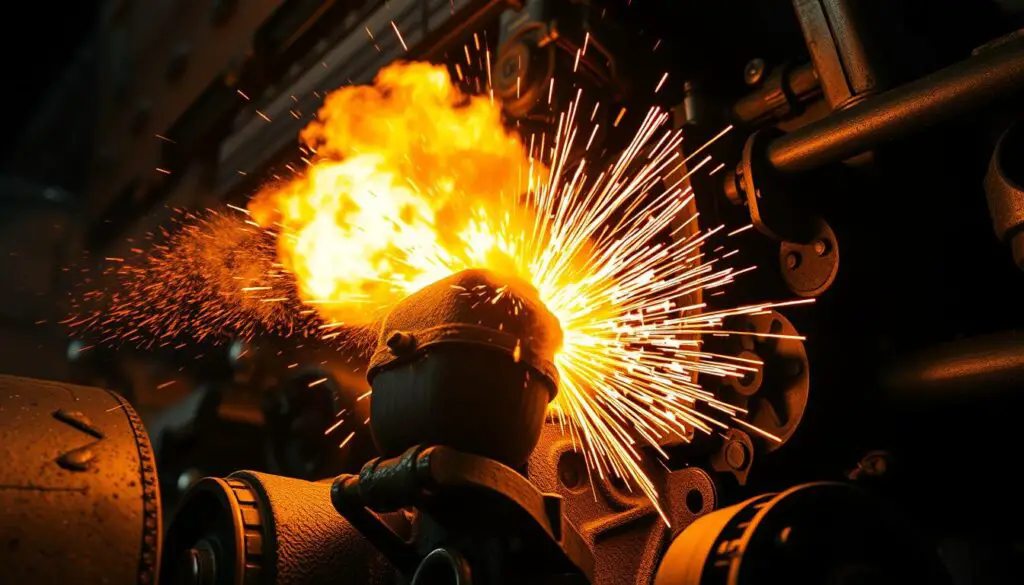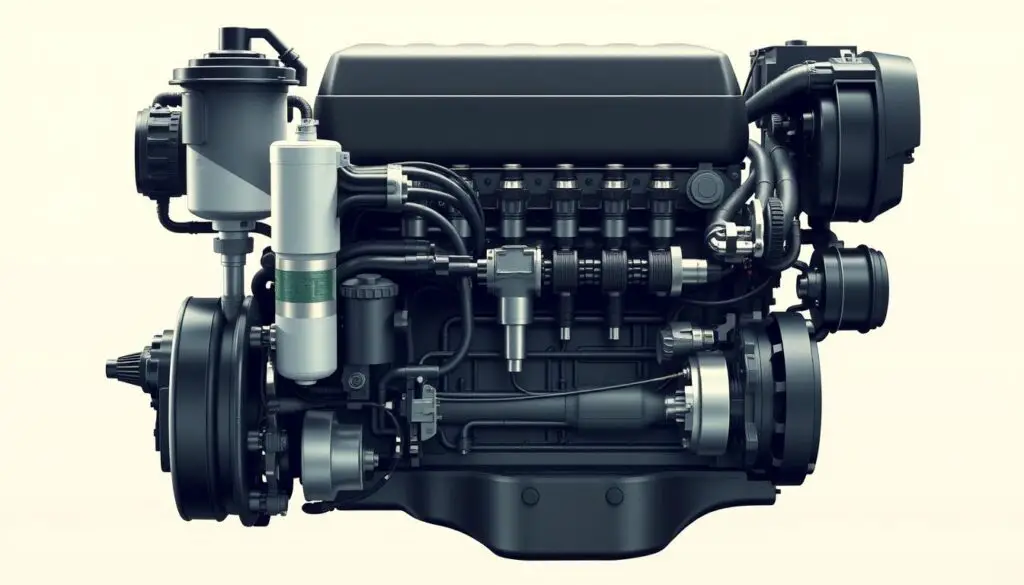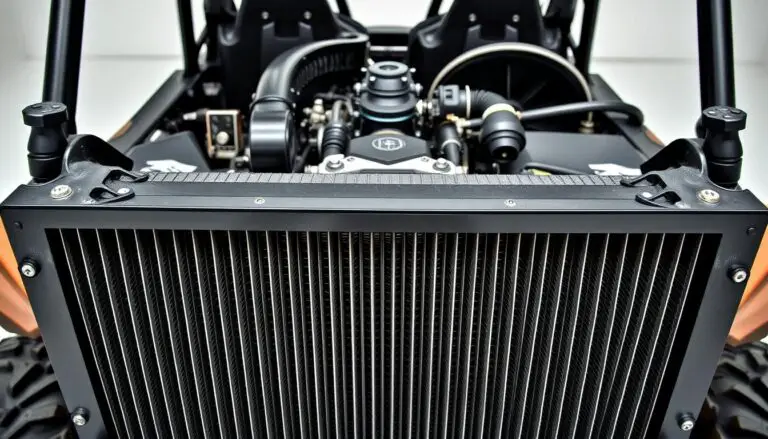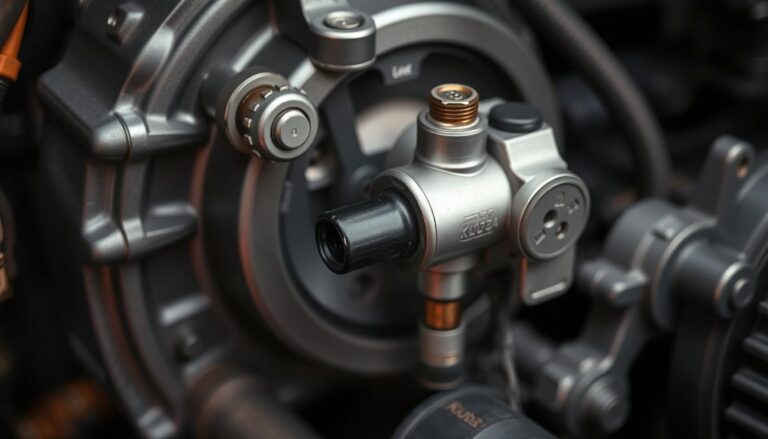Diagnosing and fixing exhaust issues is crucial for maintaining your vehicle’s performance and safety. Engine backfire can be a symptom of a deeper problem, and ignoring it may lead to costly repairs.
Backfire troubleshooting involves identifying the root cause of the issue, whether it’s related to the fuel system, ignition timing, or exhaust leaks. By understanding the causes and implementing the right fixes, you can restore your vehicle’s efficiency and prevent further damage.
Key Takeaways
- Identify the root cause of engine backfire
- Understand the importance of diagnosing exhaust issues
- Learn how to implement effective fixes for backfire troubleshooting
- Prevent further damage and costly repairs
- Restore your vehicle’s performance and efficiency
Understanding Engine Backfire
The phenomenon of engine backfire can be alarming, characterized by a sudden, loud bang or pop from the engine or exhaust. This occurrence is not only startling but also indicative of underlying issues that need to be addressed to prevent potential damage to the vehicle.
What Is a Backfire and Why It Happens
A backfire, in the context of automotive engines, refers to the explosion or ignition of the fuel-air mixture at the wrong time, leading to a loud noise. This typically happens when the mixture ignites in the intake or exhaust system rather than the combustion chamber. Faulty ignition timing, improper air-fuel mixture, and engine mechanical issues are common reasons behind backfires.

Different Types of Backfires
Backfires can be categorized into two main types: intake backfires and exhaust backfires. Intake backfires occur when the fuel-air mixture ignites in the intake manifold, often due to a faulty fuel injection system or improper ignition timing. Exhaust backfires, on the other hand, happen when the mixture ignites in the exhaust system, typically resulting from unburned fuel exiting the combustion chamber.
Safety Precautions When Dealing with Backfire Issues
When dealing with engine backfires, it’s crucial to take safety precautions to avoid injury or further damage. First, ensure the vehicle is in a safe location, away from traffic. Then, turn off the engine and let it cool down before attempting any repairs. It’s also advisable to wear protective gear, such as gloves and safety glasses, when inspecting or working on the engine.
What Causes Backfire Through Exhaust? Repair Tips and Tricks
Backfire through the exhaust is a common issue that can be caused by various factors, including problems with the fuel system, ignition timing, air-fuel mixture, and mechanical engine issues. Understanding these causes is crucial for effective diagnosis and repair.
Fuel System Issues
Fuel system issues are a common cause of backfire through the exhaust. Problems in this area can lead to an improper air-fuel mixture, causing the engine to run rough and potentially backfire.
Clogged Fuel Injectors and Filters
Clogged fuel injectors and filters can restrict fuel flow, leading to an engine backfire. Regular maintenance, such as cleaning or replacing fuel injectors and filters, can help prevent this issue. For instance, using a fuel injector cleaning kit can restore proper fuel flow and prevent backfiring.
Fuel Pump Problems
A failing fuel pump can also cause backfire by not providing sufficient fuel pressure. Symptoms of a bad fuel pump include engine sputtering and loss of power. Replacing a faulty fuel pump can resolve backfire issues related to fuel system problems.

Ignition Timing Problems
Ignition timing problems can also lead to backfire through the exhaust. When the ignition timing is off, it can cause the fuel to ignite at the wrong time, resulting in a backfire.
Faulty Spark Plugs and Wires
Faulty spark plugs and wires can disrupt the ignition process, leading to backfire. Worn out or fouled spark plugs should be replaced, and damaged spark plug wires should be repaired or replaced to ensure proper ignition timing.
Distributor and Timing Belt Issues
Problems with the distributor and timing belt can also affect ignition timing. A worn or misaligned timing belt can cause the engine to backfire. Regular inspection and maintenance of these components are essential to prevent backfire issues.
“Proper ignition timing is crucial for the engine to run smoothly. Any issues with the ignition system can lead to backfire and other performance problems.” –
Air-Fuel Mixture Imbalances
Air-fuel mixture imbalances occur when the engine receives too much or too little fuel relative to the amount of air. This imbalance can cause the engine to run rough and backfire.
Oxygen Sensor Failures
A faulty oxygen sensor can cause the engine computer to miscalculate the air-fuel mixture, leading to backfire. Replacing a faulty oxygen sensor can help restore the proper air-fuel balance and prevent backfiring.
Mass Airflow Sensor Problems
A malfunctioning mass airflow sensor can also disrupt the air-fuel mixture, causing backfire. Cleaning or replacing the mass airflow sensor can resolve this issue and prevent future backfires.
| Cause | Symptoms | Repair |
|---|---|---|
| Clogged Fuel Injectors | Engine backfire, reduced performance | Clean or replace fuel injectors |
| Faulty Oxygen Sensor | Air-fuel mixture imbalance, backfire | Replace oxygen sensor |
| Ignition Timing Problems | Backfire, engine sputter | Adjust or replace ignition timing components |
Mechanical Engine Problems
Mechanical engine problems can also cause backfire through the exhaust. Issues such as valve and cylinder problems or exhaust system leaks can lead to backfiring.
Valve and Cylinder Issues
Problems with engine valves and cylinders, such as worn or damaged components, can cause backfire. Repairing or replacing these components can resolve the issue.
Exhaust System Leaks
Leaks in the exhaust system can cause backfire by allowing unburned fuel to ignite in the exhaust. Inspecting and repairing exhaust system leaks is crucial to preventing backfire.
By understanding and addressing these potential causes, vehicle owners can diagnose and repair backfire issues effectively, ensuring their engine runs smoothly and efficiently.
Diagnosing Backfire Issues Step-by-Step
Backfire diagnosis involves a step-by-step process that helps mechanics and DIY enthusiasts identify and fix exhaust issues. This process is crucial for determining the root cause of the backfire and applying the appropriate fix.
Initial Assessment and Symptom Analysis
The first step in diagnosing backfire issues is to conduct an initial assessment and symptom analysis. This involves observing when the backfire occurs and listening for specific sounds and patterns.
Identifying When and How the Backfire Occurs
It’s essential to note when the backfire happens – during acceleration, deceleration, or when the engine is under load. This information can help narrow down the potential causes.
For instance, a backfire during deceleration might indicate an issue with the air-fuel mixture, while a backfire during acceleration could suggest a problem with the ignition timing.
Listening for Specific Sounds and Patterns
Paying attention to the sound of the backfire can also provide clues. A loud bang or popping sound might indicate a more severe issue, such as a fuel system problem.
Using Diagnostic Tools
Diagnostic tools play a critical role in identifying the cause of backfire issues. Modern vehicles often require specialized equipment to diagnose problems accurately.
OBD-II Scanners and Code Reading
An OBD-II scanner is a valuable tool for diagnosing backfire issues. It can read trouble codes stored in the vehicle’s onboard computer, providing insights into potential problems.
Timing Light and Compression Testers
Timing lights and compression testers are other essential tools. They help diagnose issues related to ignition timing and engine compression.
| Diagnostic Tool | Purpose |
|---|---|
| OBD-II Scanner | Reads trouble codes and provides diagnostic information |
| Timing Light | Checks ignition timing |
| Compression Tester | Measures engine compression |
Common Diagnostic Mistakes to Avoid
Avoiding common diagnostic mistakes is crucial for accurately identifying and fixing backfire issues.
Misinterpreting Symptoms
One common mistake is misinterpreting symptoms. Ensure that you correctly identify the signs of backfire and understand their implications.
Overlooking Simple Causes
Another mistake is overlooking simple causes. Sometimes, the solution to a backfire issue can be straightforward, such as replacing a faulty spark plug or adjusting the ignition timing.
Fixing Backfire Problems: DIY Repair Guide
Diagnosing and fixing backfire issues requires a systematic approach, which this guide will provide. By following these steps, you can identify and repair the underlying causes of backfire in your vehicle.
Repairing Fuel System Components
The fuel system is a common culprit when it comes to backfire issues. Problems such as clogged fuel injectors or faulty fuel pressure regulators can lead to an improper air-fuel mixture, causing backfire.
Cleaning and Replacing Injectors
Cleaning or replacing fuel injectors is a crucial step. Use a fuel injector cleaning kit or replace them if necessary. Ensure that you use the correct type of fuel injector for your vehicle.
Fuel Pressure Testing and Adjustment
Testing fuel pressure is vital to diagnose issues with the fuel system. Use a fuel pressure gauge to check the pressure and adjust it according to the manufacturer’s specifications.
Correcting Ignition Timing
Ignition timing plays a critical role in the combustion process. Incorrect timing can cause backfire. Check your vehicle’s ignition timing and adjust it if necessary.
Spark Plug Replacement and Gap Setting
Worn-out spark plugs can cause ignition timing issues. Replace them with new ones and ensure the gap is set correctly according to the manufacturer’s specifications.
Timing Adjustment Procedures
Adjusting the ignition timing requires precision. Refer to your vehicle’s manual for the correct procedure and use a timing light to ensure accuracy.
Addressing Air-Fuel Mixture Issues
An improper air-fuel mixture can lead to backfire. Issues such as a dirty MAF sensor or faulty oxygen sensor can disrupt this mixture.
Cleaning MAF Sensors and Throttle Bodies
Clean the MAF sensor and throttle body regularly to prevent dirt buildup. Use appropriate cleaning solutions to avoid damaging these components.
Replacing Oxygen Sensors
Faulty oxygen sensors can provide incorrect readings, leading to an improper air-fuel mixture. Replace them if necessary, ensuring you use the correct type for your vehicle.
| Component | Issue | Solution |
|---|---|---|
| Fuel Injectors | Clogged | Cleaning or Replacement |
| Ignition Timing | Incorrect | Adjustment |
| MAF Sensor | Dirty | Cleaning |
| Oxygen Sensor | Faulty | Replacement |
When to Seek Professional Help
While DIY repairs can be cost-effective, some issues may require professional attention. If you’re unsure about the diagnosis or the repair process, it’s best to consult a professional mechanic. For more information on troubleshooting car backfiring, visit this resource.
Conclusion: Preventing Future Backfire Issues
Preventing backfire issues requires regular maintenance of your vehicle’s engine and exhaust system. By understanding the causes of backfire and taking proactive steps, you can minimize the risk of this problem occurring.
Regularly inspecting and maintaining your fuel system, ignition timing, and air-fuel mixture can help prevent backfires. Additionally, addressing any mechanical engine problems promptly can reduce the likelihood of backfire issues.
To ensure future maintenance, schedule regular check-ups with a mechanic and keep track of your vehicle’s maintenance history. This will help identify potential problems before they become major issues, reducing the risk of backfire and other engine problems.
By following these tips and staying on top of maintenance, you can enjoy a smoother, more efficient driving experience while preventing costly repairs down the road.
FAQ
What is engine backfire and why does it happen?
Engine backfire occurs when the fuel-air mixture in the engine ignites outside of the normal combustion process, often causing a loud bang or popping sound. This can happen due to various reasons such as faulty spark plugs, incorrect ignition timing, or issues with the fuel system.
What are the different types of backfires and their characteristics?
There are several types of backfires, including backfire through the exhaust, backfire through the intake, and backfire in the engine. Each type has distinct characteristics and is often caused by different underlying issues.
How do I diagnose backfire issues in my vehicle?
Diagnosing backfire issues involves a step-by-step process that includes initial assessment and symptom analysis, using diagnostic tools such as OBD-II scanners and timing lights, and checking for common causes like faulty spark plugs or fuel system issues.
What are some common causes of backfire through the exhaust?
Common causes of backfire through the exhaust include fuel system issues, ignition timing problems, air-fuel mixture imbalances, and mechanical engine problems such as valve and cylinder issues or exhaust system leaks.
Can I fix backfire problems myself, or do I need to seek professional help?
While some backfire problems can be fixed through DIY repairs, such as replacing spark plugs or cleaning fuel injectors, more complex issues may require professional help. It’s essential to assess your vehicle’s specific problem and your own level of expertise before deciding whether to seek professional assistance.
How can I prevent future backfire issues?
To prevent future backfire issues, it’s crucial to maintain your vehicle’s engine and exhaust system regularly, including tasks like spark plug replacement, fuel system cleaning, and checking for any signs of wear or damage.
What safety precautions should I take when dealing with backfire issues?
When dealing with backfire issues, it’s vital to take safety precautions such as wearing protective gear, ensuring the vehicle is in a well-ventilated area, and avoiding standing near the exhaust or intake systems when the engine is running.
What diagnostic tools are recommended for diagnosing backfire issues?
Recommended diagnostic tools for backfire issues include OBD-II scanners, timing lights, compression testers, and fuel pressure testers, which can help identify the underlying causes of the backfire.


